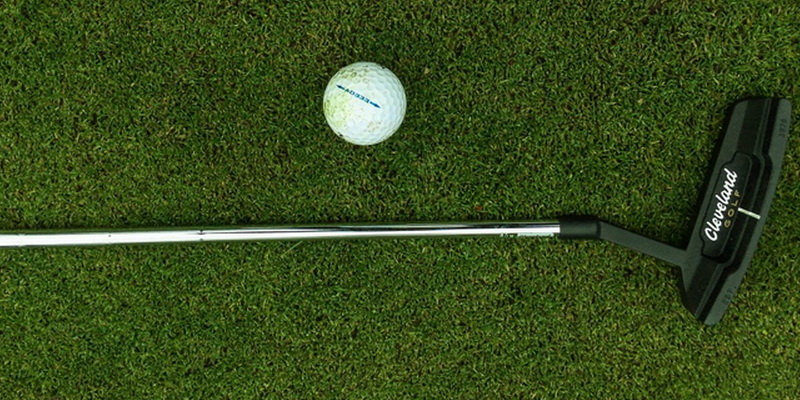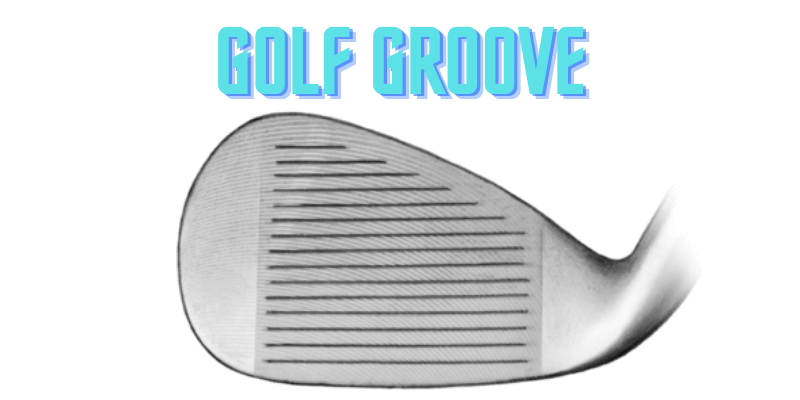The golf club that you use can determine whether you have a fantastic strike or a disappointing one. To get the best result from your strike, you need to choose the best golf club, and that can only happen if you understand different parts of a golf club. Although golf club technology has evolved over time, certain parts of the golf club have remained the same. In this article, we will discuss in detail different golf club parts names.

Parts of the golf club
❓ What are the parts of a golf club?
- Grip;
- Shafts;
- Clubhead.
❓ What are the parts of a golf clubhead?
- Loft;
- Groove.
Grip
This is one of the most crucial components of a golf club. In fact, the golf grip function in a club is similar to how the tire functions in a car. The grip is a component that sits on the opposite end of the golf club, and its primary function is to hold the club. It is the only part of the club that is touched by the golfer. Golf grips are made of different materials, including cord, synthetic leather, and rubber.
Natural leather is the most comfortable but also the most expensive. However, a golf grip made of synthetic rubber performs poorly when exposed to moisture. On the other hand, cord grips perform well in extreme weather conditions such as heavy rainfall or snow. However, cord grips are not comfortable on the hand and usually require the golfer to wear golf gloves. The best and the most material for golf grip is rubber. This is because rubber is comfortable and also prevent the club from slipping while hitting the ball. This means that you don’t have to worry about the grip slipping when you swing the club. You also don’t have to worry about the club flying through the air.

Shafts
The shaft is one of the most critical components in a golf club. This crucial component determines the distance of the golf club and playability. Grip shafts are mostly made of metal and graphite materials and are tapered, meaning they are narrower at the clubhead than at the grip end. This design allows the grip shaft to flex easily as you take the backswing to generate more power when hitting the ball. There are two types of grip shaft. They include a flexible shaft (made of graphite) and stiff shafts (made of steel). Flexible shafts are more powerful than stiff shafts but less accurate.
Golf clubs are available in different sizes, from 35-45 inches, meaning that golfers can select the perfect size that suits their laying needs. Generally, the longer the club shaft, the longer the club’s maximum distance.

Clubhead
The clubhead is the heavy part of the golf club with a round back that strikes the ball. This part is weighted to help create a strong impact when it hits the ball. Clubheads are available of three different types, including iron, wood, and putter. Each of these materials hit the ball at a different distance and trajectory.
Wood clubheads are made of wood, although they have been replaced with materials such as titanium and steel. Iron clubheads are 100% made of steel, while putters that are used on the green are made of soft metal like brass to provide a more soothing touch.
Clubheads are fitted with a sole that prevents the club from sticking as it slides on the grass. The shaft and clubhead connect at the hosel, a hole located at the base of the head. The connection point (the hosel) is hidden by a black decorative material wrapped around the top.

Parts of the golf clubhead
Loft
A loft is the angle of the clubface that controls the ball’s trajectory and also affects distance. The more loft a club has, the higher the trajectory of the ball and vice versa. The loft also has a direct impact on the distance the ball travels. For instance, the lower the loft, the further the ball will travel. More experienced golfers prefer more traditional and weaker lofts because they strike the ball out of the middle better, thus providing the launch needed.
The driver has the lowest loft’s degrees (about 10 degrees) and usually strikes the ball the furthest. On the other hand, the wedges have the highest loft degrees (about 60-degrees) and usually hit the ball the highest, but not very far. The remaining 12 golf clubs in the bag typically fill the 50 degrees gap, thus ensuring you have a club to strike any distance you need.
It is important to note that lofts usually change over time. If you hit an object on the ground repeatedly, the lofts are going to change. Therefore, it is recommended that you get your lofts checked annually. Although you strike the ball correctly, you will still not hit the ball well if some irons are a few degrees out.

Groove
Golf grooves have nearly the same function as the treads on a tire. They allow debris and water to move away from the golf ball’s point of contact, thus providing a cleaner contact and better control. When you hit a ball from an uneven surface where there is lots of debris, soil, grass, or water, grooves come in handy when making these shots. They clear any obstructions from the point of impact, thus providing clear contact and better control.
Hitting a ball from the rough is usually very unpredictable because there is plenty of debris between the ball and the club. Grooves help to make such shots more predictable. The PGA research revealed that greater groove edges sharpness and greater groove depth can make a big difference when striking shots from the rough.
The sharper and deeper grooves are referred to as U grooves, while the V grooves are the opposite. U grooves are much shallower, with rounded edges, and can move more debris away from the contact zone. The discovery of the U groove made shots from the rough very predictable.

Parts of the golf club – conclusion
Understanding different parts of the golf club and their role can help you get the best out of your golf club. The parts discussed above are the main parts in golf play, and they all work simultaneously to ensure you get the perfect shot.